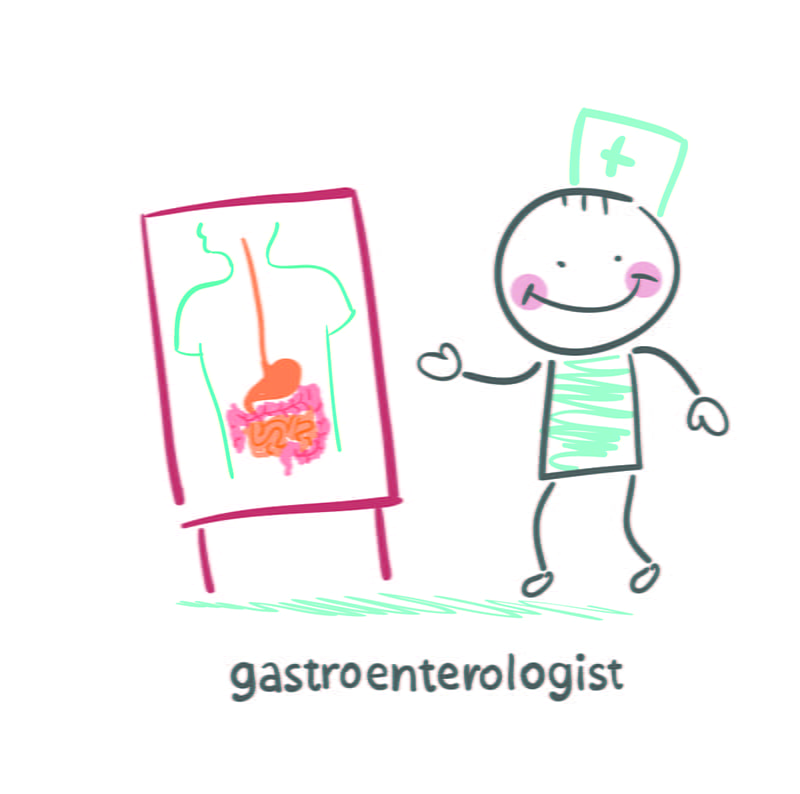AAP 2025: Highlights from Day 1
Amylase Levels in Chest Tube Output: A Biomarker for Early Detection of Esophageal Leaks in Children
Presenter: Abdimajid Mohamed
Anastomotic leaks (AL) after esophageal anastomoses in children are common, and early detection is considered essential. The diagnostic accuracy of amylase levels in chest tube drainage for AL identification was evaluated in a single-institution retrospective cohort of 68 children (median age 6 months [IQR 2–24.5], median weight 6.9 kg [4.1–11]) treated between March 2023 and August 2024.
One child (1.5%) developed a clinically significant, uncontained AL requiring reoperation, and three (4.4%) had contained, minimally symptomatic leaks managed with antibiotics. Chest tubes were maintained for a median of 7 days (range 5–9). Amylase levels were markedly elevated in the significant leak (1776 U/L) compared with contained leaks (mean 20 U/L, range 9–26 U/L) and no leaks (mean 38.28 U/L, range 3–335 U/L), p<0.001. Amylase >1000 U/L yielded 100% sensitivity and specificity for clinically significant AL but only 25% sensitivity with 100% specificity for all leaks. Elevation preceded symptoms by one day in the significant leak.
It was concluded that chest tube amylase monitoring enabled early and accurate detection of clinically significant AL in children and may facilitate lower-risk stratification, earlier tube removal, and expedited feeding.
Developing a Management Protocol for Magnet Ingestion in Pediatric Patients
Presenter: Shanquell M. Dixon
An increase in pediatric magnet ingestion was observed with the availability of ingestible products containing magnetic components. Multiple magnet ingestion was associated with severe complications requiring surgical intervention, although prior studies supported conservative management once magnets progressed beyond the stomach in asymptomatic children.
A retrospective review was conducted of children presenting with suspected magnet ingestion to a free-standing children’s hospital between January 1, 2000, and December 31, 2024. A total of 143 cases were identified; 74% (n=106) were unwitnessed, and 57% (n=81) involved multiple magnets. Children ingesting multiple magnets were older (median 7 years [IQR 3–10], p=0.014) than those ingesting single magnets. Single magnet ingestion was conservatively managed in 94% (n=58), with 10% (n=6) requiring intervention, most commonly endoscopy.
Among the 81 multiple magnet cases, 53% (n=43) were initially managed conservatively, but 56 children ultimately required intervention. The median time to endoscopic or surgical intervention after failed conservative management was 19.5 hours [IQR 16.2–37.0]. Endoscopy was performed in 8 cases, while 48 required surgical exploration, with enteroenteric fistula, bowel perforation, and bowel obstruction as common findings.
It was concluded that children with worsening symptoms or lack of progression beyond 24 hours required prompt intervention, and an evidence-based algorithm was developed for management.
Urinary Biomarkers of Renal Injury and Association with Fluid Overload in Extremely Premature Neonates in First 72 Hours of Life
Presenter: Rita Wyrebek
Acute kidney injury (AKI) is recognized as common in extremely premature neonates, but serum creatinine (sCr) was limited by maternal influence and fluid overload (FO) in the first 72 hours of life.
To address this limitation, urinary biomarkers of renal injury (uBRI) were evaluated for correlation with FO. A secondary analysis was conducted using cryopreserved urine specimens from neonates <28 weeks gestational age , collected serially at <12h, 24h, 48h, and 72h ±6h. Targeted multiplex testing (ProcartaPlexTM Human Kidney Toxicity Panels 1 & 2) was performed in duplicate and adjusted to urine creatinine. FO was calculated by daily weight change from birth and categorized as ≤-5% (FO-), -5 to +5%, or ≥5% (FO+).
Among 24 neonates, 10 (42%) were FO-, 7 (29%) were FO+, and 2 (8%) met stage 1 AKI criteria by change in sCr. Compared with FO-, FO+ neonates had lower birth weight Z-scores, were more often small for GA, more frequently received vasoactive infusions, and less frequently received indomethacin and gentamicin. Cystatin C (ρ=0.82, p=0.02) and β-2-microglobulin (ρ=0.79, p=0.04) were strongly positively correlated with FO+, while α-1-microglobulin was moderately negatively correlated with FO (ρ=-0.46, p=0.02). Additional biomarkers (MCP-1, GSTA1, TIMP1, renin, calbindin) demonstrated directional but non-significant associations.
It was concluded that several uBRI correlated with FO during the transitional period in extremely premature neonates, warranting further validation for predictive and discriminatory performance relative to current indices of renal dysfunction.
Low Cord Blood Progesterone Predicts Worse Neurocognitive Outcomes in Preterm Infants
Presenter: Rahul J. Joseph
Progesterone (P4) is critical for placental function, maternal immune response, and fetal development, with marked rises in late pregnancy and known protective effects against preterm birth when supplemented. The objective was to determine perinatal P4 levels in preterm infants and assess their relationship with neurodevelopment.
A prospective cohort of 216 inborn infants with GA <31 weeks (mean 26.7) was enrolled, excluding those with congenital anomalies or planned non-intervention. Cord blood and newborn samples at NICU admission and 24 hours were analyzed using a CLIA-certified P4 assay. The mean term cord P4 was 631 ng/mL; a cutoff of 285 ng/mL (1 SD below mean) was used to stratify subjects into low cord P4 (n=75) and normal cord P4 (n=69).
Cord samples were obtained from 66.7% (144) of subjects, with 6.9% (10) below the detection limit. Cord P4 levels rose with GA (p=0.0034), but decreased tenfold within 24 hours of life (half-life <6h). Fifty-two percent of preterm infants had low cord P4 (<285 ng/mL). Lower GA was significantly associated with worsened neurodevelopmental measures—head circumference at 28 days (p<0.0001), TIMP z-score at 3 months (p=0.0269), EMPP score at 6 months (p<0.0001), and Bayley III domains at 12 and 24 months. Low cord P4 predicted significantly lower Bayley III social-emotional, cognitive, and adaptive scores at 24 months.
It was concluded that gestational age was strongly associated with both cord P4 and neurodevelopmental outcomes. Low cord P4 levels independently predicted worse neurocognitive performance in preterm infants, supporting further exploration of P4 replacement strategies in this population.
Extensively Hydrolyzed versus Intact Milk Protein Formula and Risk of Necrotizing Enterocolitis: A Systematic Review and Meta-Analysis
Presenter: Puja Kulkarni
Necrotizing enterocolitis (NEC) is a life-threatening inflammatory condition affecting neonates, with unclear etiology and suggested risk factors including formula feeding. Given the critical role of nutrition in neonatal outcomes, the effects of extensively hydrolyzed formulas (eHFs) versus standard intact protein formulas (SPFs) on NEC and feeding intolerance (FI) in preterm infants were evaluated in this meta-analysis.
A systematic search was performed across Ovid, Cochrane, and PubMed for randomized controlled trials of preterm infants (<37 weeks) comparing eHF and SPF diets. The primary outcomes were NEC and FI incidence. Odds ratios (OR) with 95% confidence intervals (CIs) were calculated, and sensitivity analyses were conducted for study quality and heterogeneity.
Three RCTs including 1,180 preterm infants were identified. Infants fed SPFs were at significantly greater risk of NEC (OR=2.54; 95% CI 1.38–4.68) and FI (OR=1.87; 95% CI 1.38–2.52) compared with those fed eHFs. Sensitivity analyses supported the robustness of these findings.
It was concluded that SPFs significantly increased NEC and FI risk in preterm infants relative to eHFs. These data supported the integration of eHFs into neonatal feeding guidelines and highlighted the broader implications of formula composition on infant and child health, warranting further research on long-term outcomes.
Impact of Maternal RSV Vaccination During Pregnancy of Infant Outcomes: A Systematic Review and Meta-Analysis of RCTs
Presenter: Mahathi Chavali
Respiratory syncytial virus (RSV) is a leading cause of acute lower respiratory tract illness (LRTI) in children under five, with the highest burden during the first six months of life. Maternal RSV infection, particularly in late pregnancy, had been associated with adverse perinatal outcomes, and maternal vaccination was evaluated as a potential preventive strategy.
A systematic review and meta-analysis were conducted per PRISMA guidelines. Eligible randomized controlled trials (RCTs) reporting maternal RSV vaccination and infant outcomes were identified. Six RCTs including 17,991 pregnant women were analyzed.
Maternal RSV vaccination significantly reduced infant hospitalization due to RSV (RR 0.50; 95% CI 0.31–0.82; p=0.006) compared with placebo, but no significant reduction was observed in infant mortality (RR 0.81; 95% CI 0.36–1.81; p=0.60). Vaccination with the RSV pre-F protein vaccine was associated with an increased risk of preterm birth (RR 1.26; 95% CI 1.08–1.47; p=0.003), while no difference was found in congenital anomalies (RR 0.96; 95% CI 0.88–1.04; p=0.31).
It was concluded that maternal RSV vaccination reduced RSV-related hospitalizations in infants but raised safety concerns regarding preterm birth with the pre-F protein subtype. Further large-scale studies were deemed necessary to confirm safety, assess long-term outcomes, and guide recommendations for maternal vaccination programs.
Serum Bilirubin as a Biomarker for Neonates with Hypoxic Ischemic Encephalopathy
Presenter: Harisa Spahic
Prior studies of bilirubin in infants with hypoxic ischemic encephalopathy (HIE) have yielded mixed findings, and large population studies have not determined whether bilirubin is associated with disease severity, therapeutic hypothermia (TH), or outcomes. It is hypothesized that lower bilirubin, given its antioxidant properties, would be associated with more severe HIE.
A retrospective case-control study was conducted at Children’s Hospital Colorado from January 2010 to September 2023 using the Children’s Hospitals Neonatal Database and chart review. Infants >35 weeks gestation admitted within 24 hours of life were included, excluding those with haemolytic disease or direct hyperbilirubinemia. Cases of HIE (classified by severity within 6 hours) were compared with controls, many of whom were transferred for evaluation but not diagnosed with HIE. Data included bilirubin and albumin values, post-cooling MRI, neurological exam findings <5 years, and Ages and Stages Questionnaires.
A total of 524 infants were analyzed (353 with HIE, 171 controls). Infants with HIE had significantly lower 24-hour and maximum serum bilirubin than controls. Maximum bilirubin decreased with increasing HIE severity (mild: 8.37±4.6; moderate: 7.63±3.9; severe: 5.30±2.4 mg/dL; p<0.001). A similar decline was observed at 24 hours (p<0.05). Bilirubin was not associated with TH use but was higher in males. Differences in bilirubin were detected across EEG-based severity (p=0.002). Lower maximum bilirubin trended with abnormal neurological exams, low ASQ scores, and cerebral palsy diagnoses by 5 years.
It was concluded that bilirubin declined with increasing HIE severity, suggesting a role as an acute biomarker of injury burden. However, maximum bilirubin did not correlate strongly with long-term imaging or neurodevelopmental outcomes, though reduced levels may help contextualize disease severity in affected neonates.
Risk Factors and Outcome of Ventilator Associated Pneumonia in Children Aged 1m to 12 years Admitted in Paediatric Intensive Care Unit of a Tertiary Care Hospital in Northern India
Presenter: Dvijraj Kalita
Ventilator-associated pneumonia (VAP) is defined as pneumonia occurring after mechanical ventilation for more than 48 hours. The prevalence of VAP in pediatric intensive care units (PICU) is reported to range from 8% to 23%. Due to limited data on VAP severity in the North Indian population, a study was conducted to evaluate the risk factors and outcomes of VAP in children aged 1 month to 12 years admitted to the PICU.
A prospective observational study was performed over 18 months in the pediatrics department of VMMC and Safdarjung Hospital, New Delhi. Children mechanically ventilated for more than 48 hours were included. Demographics, nutritional status, primary diagnoses, duration of hospital stay, ventilator days, reintubation rates, clinical pulmonary infection score (CPIS), and pediatric risk of mortality (PRISM) scores were recorded.
A significant positive correlation was observed between PRISM scores and the duration of ventilation and hospital stay. Higher PRISM 3 scores were found to be significantly associated with VAP development. Duration of ventilator use and hospital stay were identified as major risk factors for VAP incidence.
It was concluded that longer ventilator and hospital stays were principal risk factors for VAP development. The PRISM 3 score was found to be a useful predictor for VAP. Further larger, prospective, multicentric research was recommended to better evaluate VAP risk factors and outcomes.
Vitamin K Administration During Pediatric Sepsis: A Single Center Observational Study
Presenter: Audrey Hughes
Vitamin K, an essential clotting cofactor, is frequently prescribed for sepsis-induced coagulopathy despite the absence of pediatric clinical trials evaluating its use and limited observational data on sepsis-related vitamin K deficiency.
A single-center, retrospective cohort study was conducted at a tertiary pediatric referral center including children under 18 years hospitalized for sepsis between June 1, 2022, and June 1, 2024. Children with short-gut syndrome, cystic fibrosis, chronic vitamin K supplementation, or chronic hepatic dysfunction were excluded. The primary outcome measured was the rate of vitamin K prescription. Secondary outcomes included rates of clinically relevant bleeding and hospital-acquired venous thromboembolism (VTE).
Among 285 children studied, 65 (22.8%) were prescribed vitamin K at a mean dose of 4.2±1.9 mg/day. INR was tested at admission in 36.5% of children, including 80% of those prescribed vitamin K. INR values were significantly higher in children receiving vitamin K compared to those not prescribed it (median 1.63 [IQR 1.38–1.97] versus 1.26 [IQR 1.13–1.35], p<0.001). Children receiving vitamin K had higher rates of clinically relevant bleeding (30.8% versus 5.9%, p<0.001) and venous thromboembolism (21.5% versus 7.7%, p=0.005) and were more frequently transfused with packed red blood cells (60% versus 11.8%) and plasma (35.4% versus 0.5%) (both p<0.001). Those prescribed vitamin K were older, more often admitted postoperatively, had a higher incidence of acute hepatic dysfunction, and demonstrated more severe clinical courses, including increased rates of invasive ventilation, central venous catheterization, mortality, and longer hospital stays.
It was concluded that vitamin K was frequently administered to children hospitalized with sepsis despite limited laboratory evidence of coagulopathy.
Risk Factors for Non-response to Initial Intravenous Immunoglobulin Plus Methylprednisolone Therapy in Children with Kawasaki Disease
Presenter: Minna Yang
Intravenous immunoglobulin (IVIG) combined with corticosteroids is recommended as the initial intensified therapy for high-risk IVIG-resistant Kawasaki disease (KD) patients. However, limited studies have evaluated the responsiveness to this therapy.
High-risk IVIG-resistant KD patients were assessed using the Yang score and Kobayashi score prior to treatment between January 2020 and June 2024. All included patients received IVIG plus methylprednisolone. Patients were categorized into resistance and response groups after treatment. Propensity score matching (PSM) was applied at a 1:4 ratio based on age and sex. Logistic regression analysis was performed to identify independent risk factors associated with resistance to IVIG plus methylprednisolone.
Among 1,511 KD patients, 150 were identified as high-risk IVIG-resistant, with 13 showing resistance and 137 responding to IVIG plus methylprednisolone. Total bilirubin (TBil) (OR 1.024, 95% CI: 1.003–1.048, p=0.031) and the Yang score (OR 1.575, 95% CI: 1.204–2.190, p=0.002) were identified as independent risk factors for treatment resistance. Elevated interleukin-6 (IL-6) levels were also a potential risk factor (OR 1.002, 95% CI: 1.000–1.005, p=0.054). The area under the ROC curve (AUC) for TBil ≥20 μmol/L was 0.745 (95% CI: 0.602–0.888) with sensitivity 84.6% and specificity 71.2%. The AUC for the Yang score ≥12 was 0.745 (95% CI: 0.583–0.906), with sensitivity and specificity both at 76.9%.
It was concluded that TBil levels ≥20 μmol/L, Yang scores ≥12, and elevated IL-6 levels were independent risk factors for resistance to IVIG plus methylprednisolone. These findings were suggested to aid pediatricians in selecting individualized treatment strategies for high-risk refractory KD patients.
Monocyte Biomarker Offers Early Screening Tool for Identifying Sepsis in Children Presenting to the Emergency Room
Presenter: Lael Yonker
Monocyte anisocytosis, quantified as monocyte distribution width (MDW), has been linked to immune dysregulation in sepsis, severe COVID-19, and Multisystem Inflammatory Syndrome in Children. The ability of MDW measured at emergency department presentation to identify severe infection or sepsis in children was evaluated prospectively.
Whole blood samples from children under 18 years presenting to the emergency rooms at Mass General for Children and Johns Hopkins Children’s Center between June 2022 and June 2024 were analyzed on a UniCel DxH 900 hematology analyzer. Medical records were reviewed and children were assessed for sepsis according to Sepsis 2 criteria. Outcome analyses used ANOVA and the diagnostic accuracy of MDW was assessed with receiver operating characteristic (ROC) curves.
A total of 1,395 samples were analyzed, with a mean participant age of 8.2 years (SD 5.4). The cohort was predominantly White and non-Hispanic; 28% identified as Black and 24% as Hispanic. Median MDW values were significantly elevated in children with sepsis and confirmed infection (25.4, SD 3.8) and those with sepsis and suspected infection (24, SD 6.3) compared to children without infection or with mild infection (19.6 and 19.3, respectively; p<0.0001 and p=0.0005). ROC analysis yielded an area under the curve of 0.77, indicating good screening performance for sepsis. Dual MDW thresholds of 20 and 28 were proposed to stratify low versus high suspicion of sepsis.
It was concluded that MDW can be measured during initial complete blood counts upon emergency presentation, serving as an early, objective marker for pediatric sepsis. The use of MDW to rapidly identify high-risk patients may improve clinical outcomes, while lower MDW thresholds may guide safer discharge decisions.
American Academy of Paediatrics National Conference & Exhibition 2025 (AAP 2025), 26-30 September 2025, Denver



